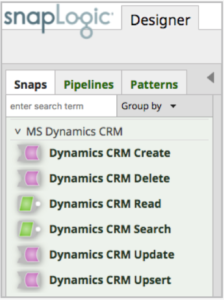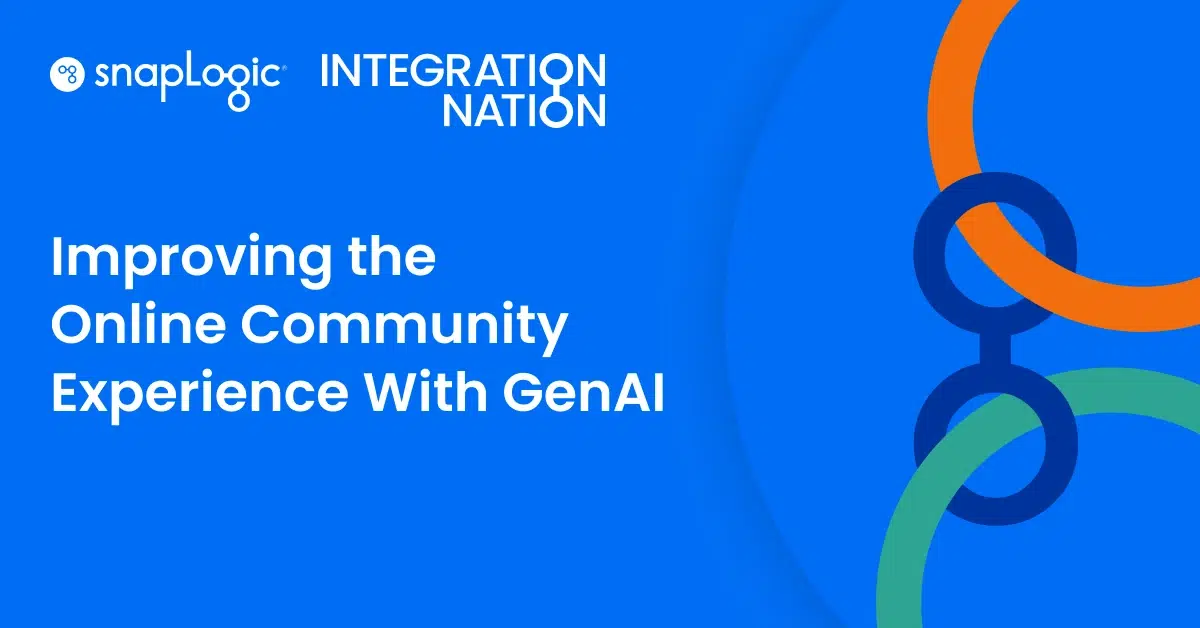The long tail of application integration has to be one of the heaviest albatrosses hanging around the neck of enterprise IT organizations. Not only does each integration require a meticulous 10-step planning and development process; maintenance of each integration is a never-ending chore as the two (integrated) applications are patched, updated, and upgraded. It seems that the labor-intensive, iterative nature of ESBs, ETL, and application programming interfaces (APIs) may be the reason why, 40 years later, data silos stubbornly persist in today’s enterprise.
Customer relationship management applications are among the most popular candidates for enterprise integration, enabling key process automations such as quote-to-cash and lead-to-close. With drag-and-drop simplicity, SnapLogic enables instant bidirectional data connectivity and forward compatibility between CRM applications such as Microsoft Dynamics CRM (both on-premises and cloud versions), effectively eliminating the laborious process related to API-driven integration, for example.
This is how we do it: Microsoft Dynamics CRM Snap Pack
SnapLogic’s Microsoft Dynamics CRM Snap Pack abstracts the complexities of moving data in and out of this core sales system with easy to use, pre-built, intelligent connectors aka Snaps. The Snap Pack delivers key capabilities, including fast bulk data movement, for connectivity between Dynamics CRM and a multitude of enterprise applications:
- Create: Creates records by object type
- Read: Reads all records by object type
- Update: Updates a record
- Delete: Ability to delete a record based by ID
- Search: Ability to search with various filter options
- Upsert: Ability to update existing records or insert new records
Figure 1 illustrates the Snap Pack’s six Microsoft Dynamics 365 CRM Snaps, as seen from the SnapLogic Designer. These Snaps can be used to build a wide range of business use cases including quote-to-cash, tracking a sales lead to closure (lead-to-close), or migrating data from Salesforce to Microsoft Dynamics CRM. The SnapLogic Snap Pack can be used with either Microsoft Dynamics CRM on-premises or cloud-based Dynamics 365 CRM.
Figure 2 shows how a user can build a pipeline to deliver a quote-to-cash process. Here, an invoice is created in Microsoft Dynamics CRM when the sale occurs and is imported into Workday as part of Revenue Management tracking.
These examples capture the stark difference between manual application integration – which typically produces 200 to 300 lines of code – and drag-and-drop data integration using SnapLogic Snaps.
Figures 1 and 2 represent the first step of building the sales process flow. Securing this data (revenue forecast) is the next step, and can be readily accomplished using Field Encrypt and Decrypt Snaps, which are part of the separate SnapLogic Transform Snap Pack.
Focus on business, not maintaining code
By using SnapLogic Snaps instead of APIs, IT organizations in the Microsoft Dynamics CRM enterprise are empowered to serve demanding users faster and more effectively. For the first time, IT can focus resources on critical value-add projects instead of on connector development and maintenance.
This blog wraps up my three-part series on how SnapLogic brings together customer data across on-premises and cloud applications in today’s hybrid enterprise. To learn more right now, download SnapLogic’s new white paper, “Enterprise reality check: Extending the value of Microsoft Dynamics CRM.”
Also check out my library of SnapLogic blog posts. Thanks!














